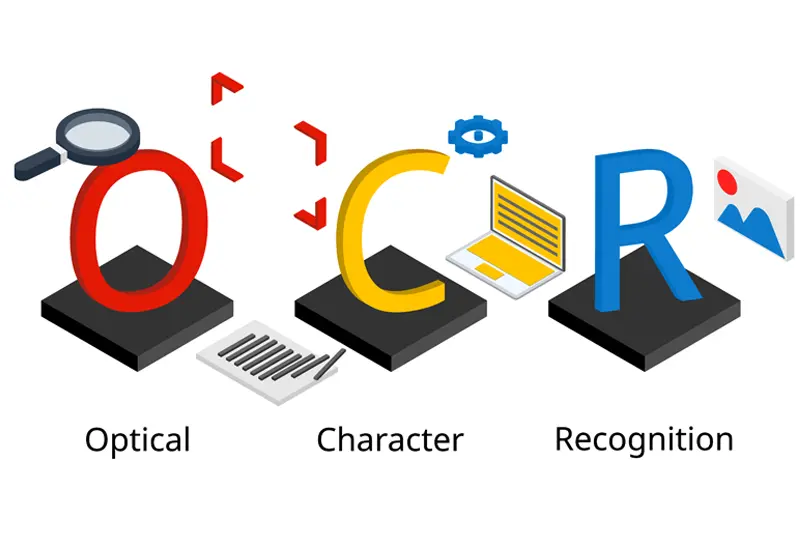Considered as a heavily paper-based industry, the insurance sector has to deal with myriad documents. Right from policy documents, cover notes, and certificate of insurance, to proposal forms and endorsements, the industry receives a constant flow of documents from internal as well as external sources. These ever-increasing document piles could prove to be a major concern for insurance firms as the staff would find it tedious to manage them efficiently. Converting all this crucial data or documents into digital format with the help of data entry services is the practical solution for this concern. Digitized documents ensure safety, easy storage, and quick retrieval of data.
To reduce the time taken to process payments as well as ensure better customer service, insurance firms need to streamline their organizational processes and organize their work. Optical Character Recognition (OCR) is a unique technology that you can utilize as part of high-volume information extraction. Critical to the ongoing digital transformation of the insurance industry, OCR technology enables automated document onboarding, sorting and analysis, and makes all business workflows – from the insurance claim process to product development to customer service – more efficient and effective.
It is vital to process insurance documents accurately and efficiently. Initially, insurers had to scan and convert paper documents into flattened image files – a process that required considerable human intervention. This led to unmanageable work delays, errors, and long hours of work were the order of the day. Such practices also led to uncontrollable costs, lower profit and lower customer retention. In addition, there were also duplicate or multiple processes, alongside many other organizational silos, which further increased insurance operations costs, leading to severe losses for insurers.
OCR and Insurance Documents Digitization
Insurance document digitization is a perfect solution to address the hassles of process delays, and can even help insurance firms harness deeper data-driven insights to build better solutions. The insurance industry faces a few barriers like – duplicate and manual processes, knowledge/data/organizational silos, complex business models, etc. Achieving digital operation excellence and digital customer experience is the main challenge faced in data-intensive industries like insurance. In fact, there are some areas with automation potential such as – insurance proposal and claim data entry, payroll audit, insurance certificate generation, and invoice processing – where still many manual workflows are prevalent. Optical Character Recognition (OCR) in insurance provides an exciting platform to help insurances achieve seamless control over their tasks. In simple terms, OCR is a technology that transforms electronic or mechanical scanned or photographic images of printed, typewritten or handwritten text into computer-readable text/images.
Why Insurance Policies Are Needed in Digital Format
Insurance policies in digital format are a mandatory legal requirement across the world. Maintaining data in digital format eliminates the hassles of process delays and helps in deeper analysis for forecast purposes. This digital system helps in effective comparison with competitors’ products and services thereby offering better customer solutions.
Digitization of insurance policies involves the following advantages –
- Limited Manual Work/Paperwork – Digitization help integrate several insurance processes. Therefore, data verification becomes easy and less time consuming. This is particularly significant when an existing customer tries to renew the policy or buy a different policy from the same company. Customer gets the required solution within a matter of few seconds as the entire data is stored digitally and easily verifiable. In short, there is no need for filling too many forms or documents or giving the same information earlier.
- Transparency and Convenience – Transparency when processing a claim is greatly increased when details and data are made available online. Data dashboards give a single unified view of the entire details of a customer. By using the online portal, customers can easily pay premium, submit any type of service request or lodge complaints.
- Safety and Security – Insurance policy data stored online is digitally safe and helps in quick policy reference. This involves lesser risk of losing the policies which are stored online. In short, the system offers security from fraud instances as well.
Optical character recognition (OCR) is the cornerstone of data capture and management processes in the insurance industry. It allows insurance companies to get full value from their data and their automated analytics tools. With the help of OCR technology, insurance companies can analyze and streamline large-volume data and draw valuable business insights. Incorporating correct OCR technology can standardize documents by turning scanned documents into searchable PDFs or into any other file type. Partnering with a reliable data entry company is the best way to ease the documentation burden faced by insurance firms and improve efficiency in the long run.
| At Managed Outsource Solutions (MOS), our team provides high-quality data conversion services for diverse business sectors, to transform bulk documents into the desired format, making the data easy to access and store. For support, call us at (800)-670-2809!The benefits and significant role of OCR in automating document processing in the insurance industry will be discussed in the next OCR blog. |




